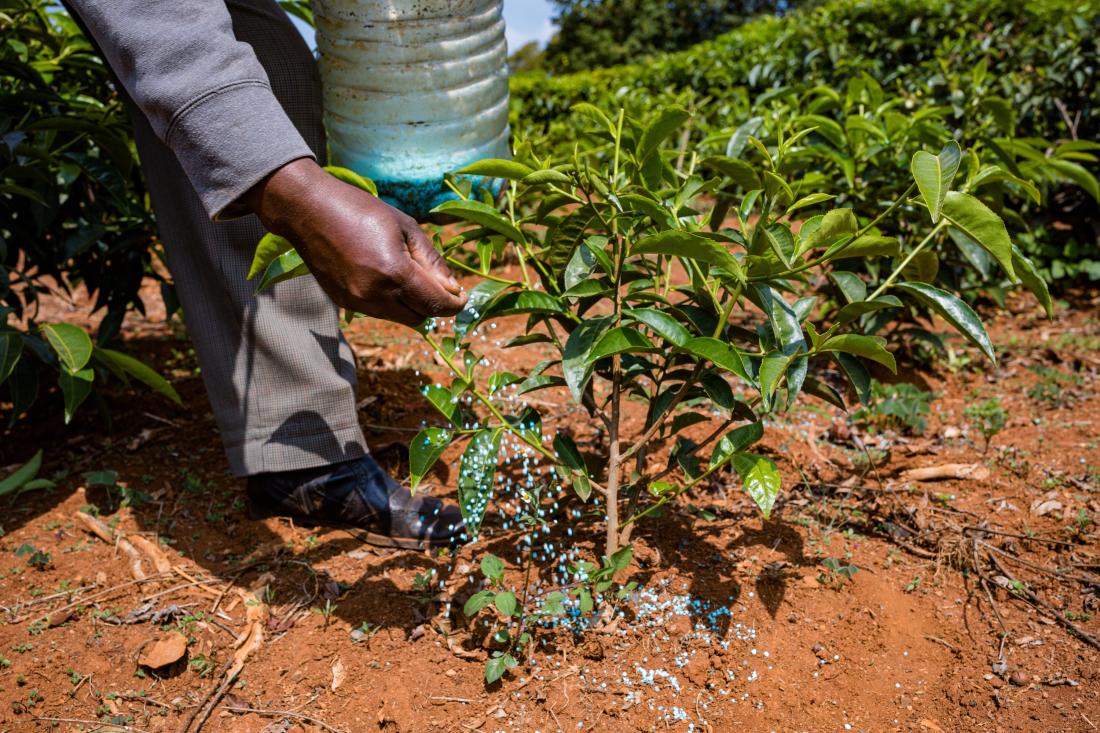The Market for Local Agricultural Information in Western Kenya
- Farmers
- Technology adoption
- Productivity
- Digital and mobile
- Fertilizer and agricultural inputs
- Information
Providing better information to farmers about local agricultural conditions could enable them to make more informed and locally appropriate agricultural decisions, with potentially positive consequences for their income, food production, and the environment. This study in Western Kenya will test for failures in the market for local agricultural information and measure the impact of disseminating local information on farmers’ decisions to invest in agricultural inputs.
الموضوع الأساسي
Across Africa, soil and agro-climatic conditions vary dramatically from place to place, and some researchers argue this high variability has hindered the continent’s ability to reap the benefits of the Green Revolution like Asia and Latin America have. After all, the effectiveness and/or profitability of specific agricultural inputs can be highly dependent on local conditions such as soil type, micro-climate, and local prices. Providing better information to farmers about local agro-climatic conditions may help them make more informed and appropriate agricultural decisions, with potentially positive consequences for their income, food production, and the environment. However, information has traditionally been difficult to sell: since information can be easily shared, it is hard for a producer of information to recover its costs. Failures in the market for local information might warrant the development of policies that would support the creation and dissemination of local information.
سياق التقييم
In Western Kenya, soil tests that can determine what type and amount of inputs are suitable for a given area are rarely used. Most small-scale farmers have never formally experimented with different fertilizers on their own land. While soil tests and experimental plots might be too expensive for every farmer to implement (especially since farms are small), testing soils for some farmers in the area and sharing these results with neighboring farmers could potentially be a cost-effective way to produce locally-relevant information about soil conditions and appropriate inputs.

معلومات تفصيلية عن التدخل
This study in rural Western Kenya aims to measure farmers’ demand for local agricultural information, evaluate the impact and cost-effectiveness of different information interventions, and explore the potential for institutional mechanisms to address market failures.
First, researchers will conduct a randomized evaluation among a group of 1,069 smallholder farmers to better understand how two types of information affect their decisions to purchase fertilizer. Eight-hundred respondents will be randomly assigned to receive soil tests or both soil tests and test plots on their land. The remaining 269 respondents will serve as a comparison group. During an initial survey, soil samples will be collected and sent to a lab for testing, to measure the soil’s acidity and nutrient composition, and to determine the best type of inputs to improve the soil quality.
Farmers assigned to receive test plots will receive fertilizer and technical assistance to set up plots using different types of fertilizer. After harvesting with the farmers, researchers will analyze the test plot yields to inform the farmers of which inputs are most profitable for their land. All respondents will also receive fertilizer coupons to measure the effect information has on decisions to purchase fertilizer.
Second, researchers will measure demand for local agricultural information from a new group of farmers’ identified in the first evaluation. To do so, the research team will elicit farmers’ willingness to pay for test plot and soil test results from other farmers in their area.
Third, researchers will also work with the second study sample to examine the relative effectiveness of two additional sources of agricultural information on farmers’ knowledge and investment decisions. In a partnership with the Kenya Agriculture and Livestock Research Organization, they will randomly divide the sample into three groups: one incentivized to attend open farmer field days, one to receive an SMS intervention, and a comparison group. The farmer field days will exhibit test plots and provide information about best farming practices. The SMS intervention will provide farmers with general tips about how to increase yields throughout the season.
Finally, once results from the endline surveys are in, researchers will compare all of the information inventions tested to identify the most cost-effective and scalable solutions.
النتائج والدروس المستفادة بشأن السياسات
Study ongoing, results forthcoming.

